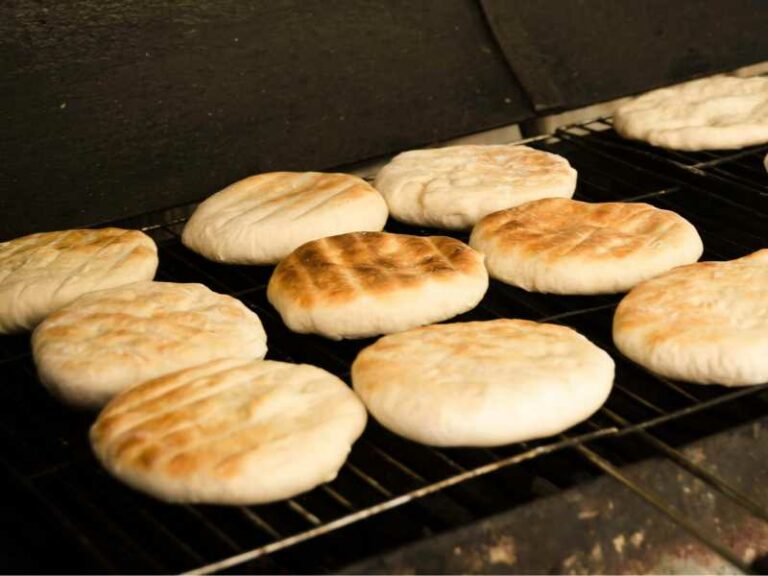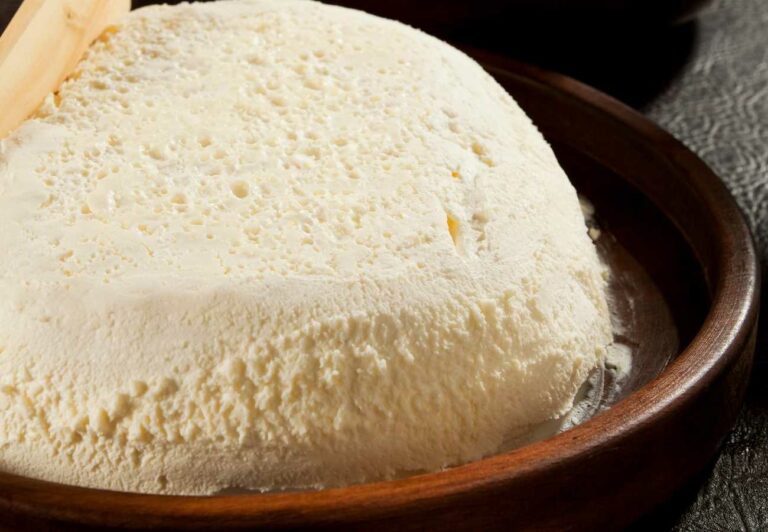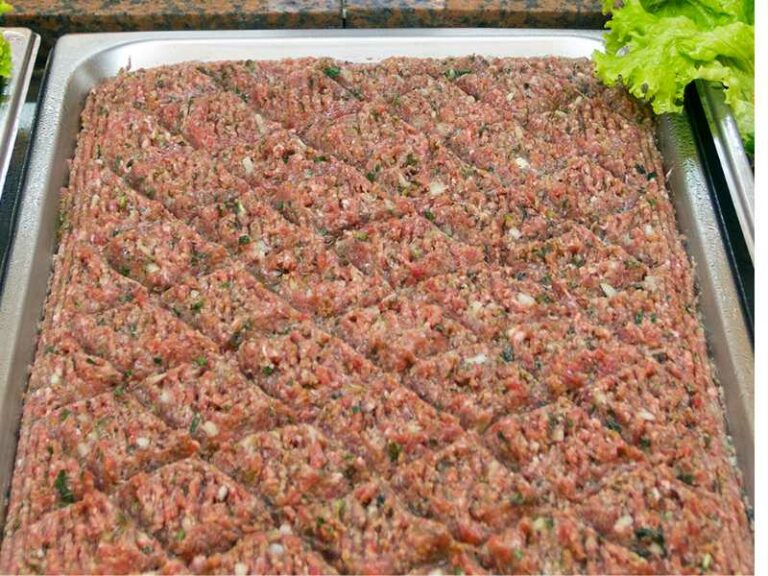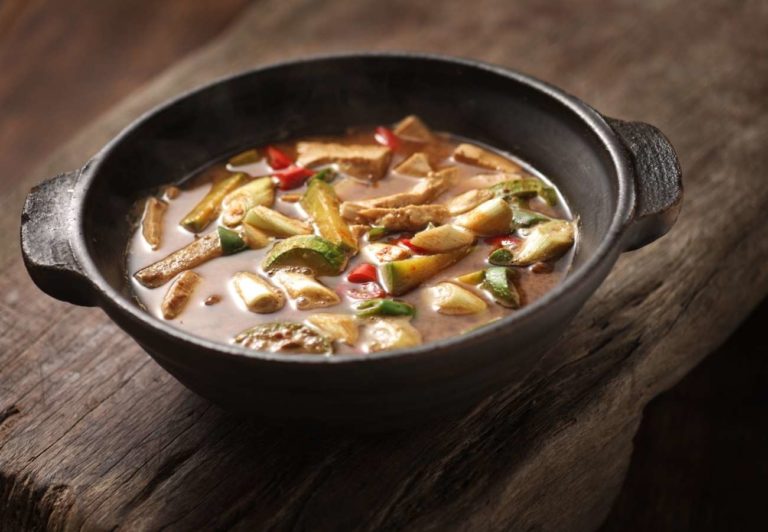Israeli Foods: 23 Traditional Dishes of Israel
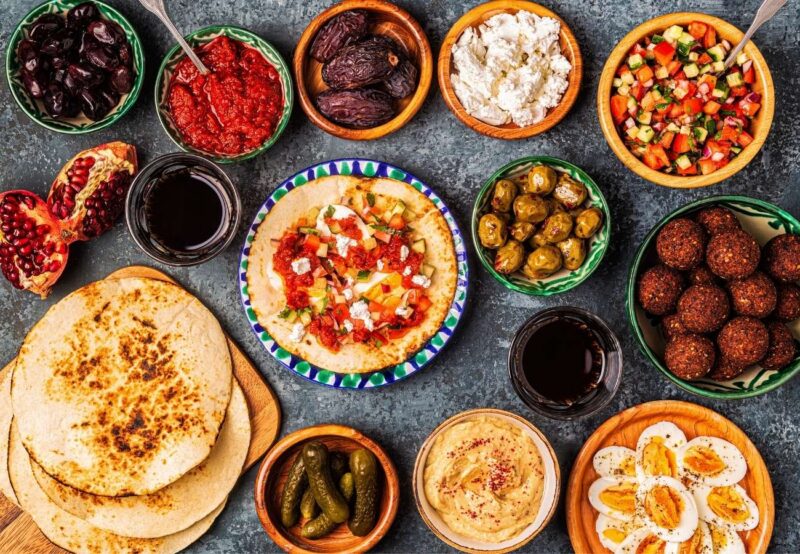
Israel is a land of the eternal sun, sandy deserts and amazing foods. Created a little over 70 years ago, it is a country of contradictions, traditional values, gastronomical values and modern technologies. Israel is known for its holy places and the healing Dead Sea that awaits tourists all year round.
The cuisine of Israel has been influenced over the years by Mediterranean and Arabic ingredients and cooking styles, plus significant influences from the Jewish diaspora.
The Local cuisine of Israel is usually divided into two main categories – Ashkenazi and Sephardic, as well as the country’s population itself. Ashkenazim, who make up about half of Israel’s Jewish population, are mostly descendants of immigrants from Central European countries. Immigrants from the Iberian Peninsula, as well as from the south of France, from Greece, Turkey and Italy are called Sephardic.
Ashkenazim love chicken broth, liver pate, forshmak and tzimmes. Sephardim on the other hand prefer such dishes as couscous, shakshuka or mafrum. These dishes are full of spices, fresh herbs and lemon juice for freshness, they were invented in hot climates, so they remain fresh and tasty for a long time.
Shakshuka
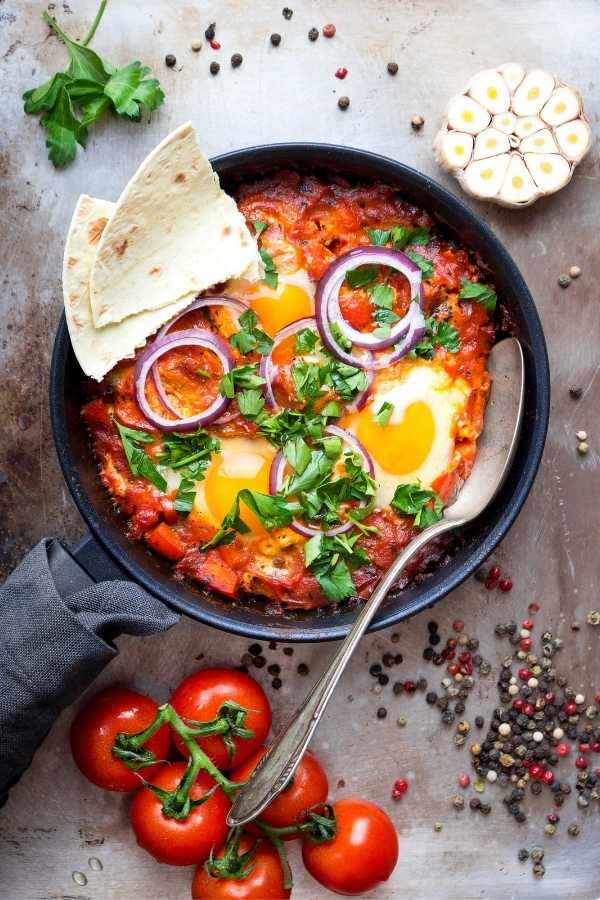
Shakshuka is a Maghrebi dish made from eggs, tomatoes, tomato paste, chilli peppers and onions. But there are also variations with paprika, feta, eggplant or spinach. Shakshuka, the unofficial national dish of Israel, actually comes from North Africa, but is very popular throughout Israel.
Hummus

Hummus is a dip made from pureed chickpeas and tahini paste. In Israel, hummus is rarely found to be missing from any meze plate. It is traditionally eaten with pita bread. There are also variants of hummus with chicken or beef, which can be eaten as a main course.
Falafel
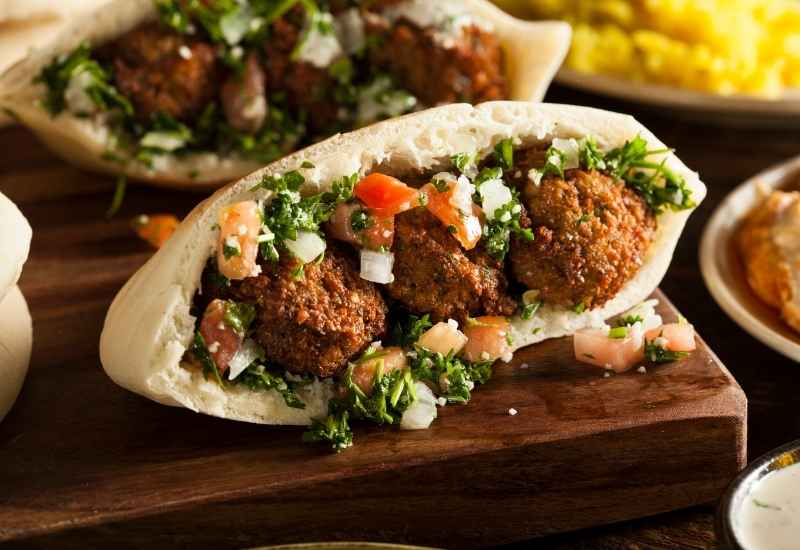
Falafels are small fried balls prepared from ground chickpeas and a wide range of spices. They are classically served with salad, sesame paste tahini and hummus in a piece of pita bread.
Originally, falafel balls were considered to be poor people’s food that was only served with a little sesame sauce. Today it is a popular street food item that can easily be found in small roadside eateries and indeed throughout big restaurants in Israel.
Sabich
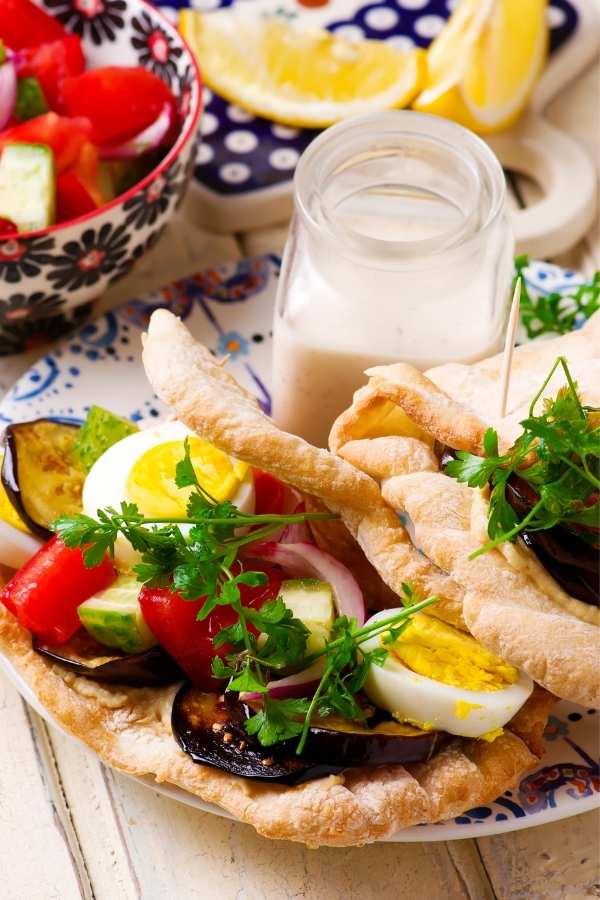
Sabich is an Israeli sandwich consisting of fried or baked aubergine slices, hard-boiled eggs with tahini and is wrapped in a flatbread. It’s a tasty, meat-free alternative to shawarma. From small roadside stalls to big restaurants, this dish can easily be found throughout Israel.
Shawarma
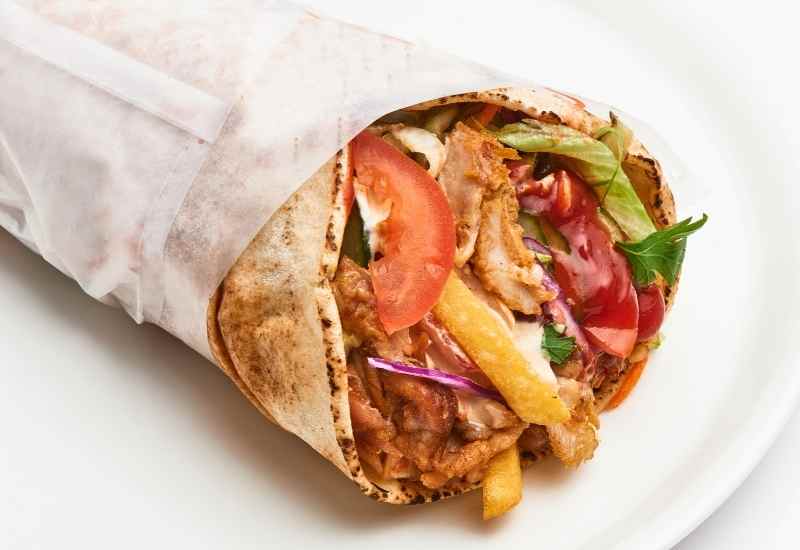
Shawarma is a type of kebab consisting of chicken thigh meat, hummus, lettuce, eggplant and sauces. Though it is popular in Turkey also (known as doner kebab), the Israeli version is slightly more evolved the Turkish one.
Baba Ganoush
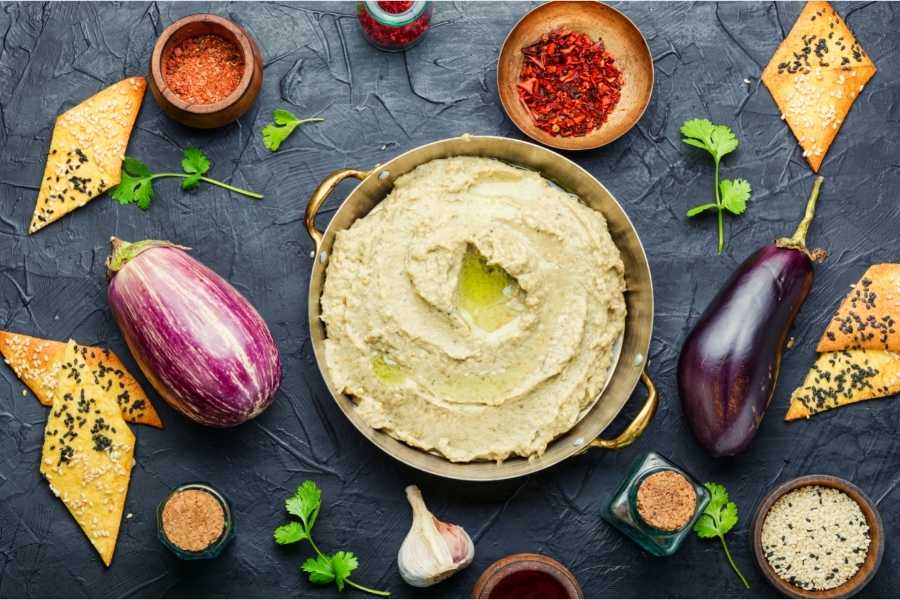
Baba Ganoush is an appetizer dip made from grilled eggplant with tahini, lemon juice, garlic and spices. It is eaten as a starter with fresh bread or served as a dip with shawarma and falafel. It is quite similar to hummus except that Baba Ganoush calls for grilled or roasted eggplant whereas hummus uses chickpeas.
Amba
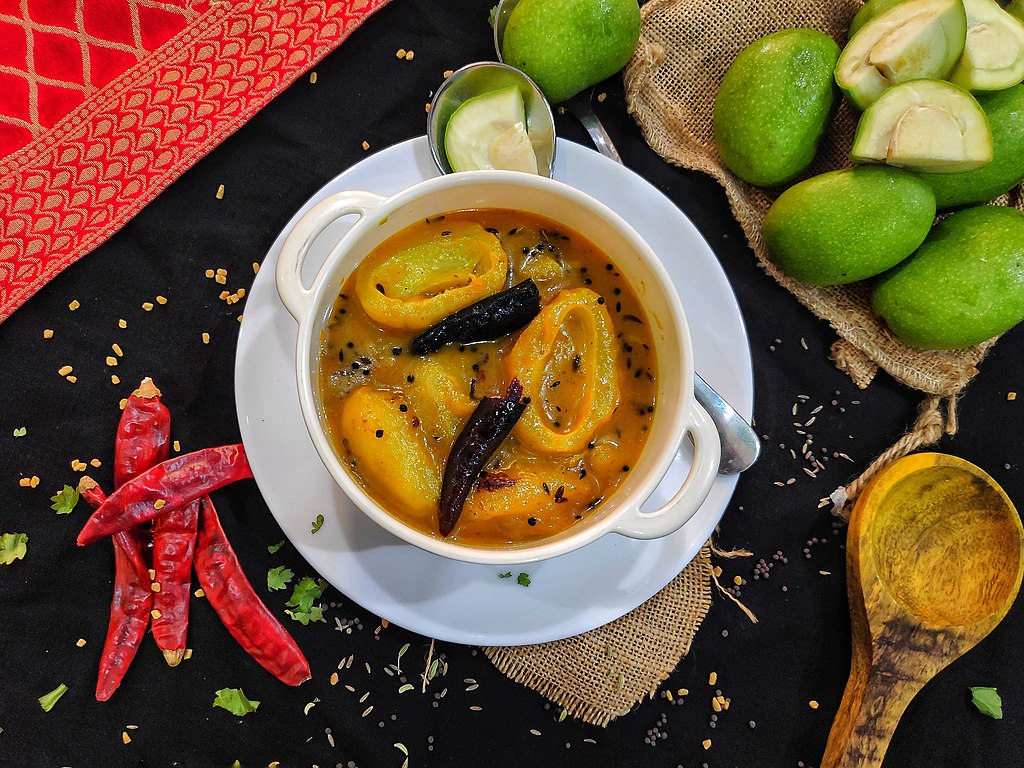
Amba is a sweet and spicy mango dip that is made from mangoes, vinegar, salt, mustard, turmeric, chilli, and fenugreek. It is most often served as a dressing on sabich and as a dip with falafel, kebab, salads and shawarma.
Jachnun
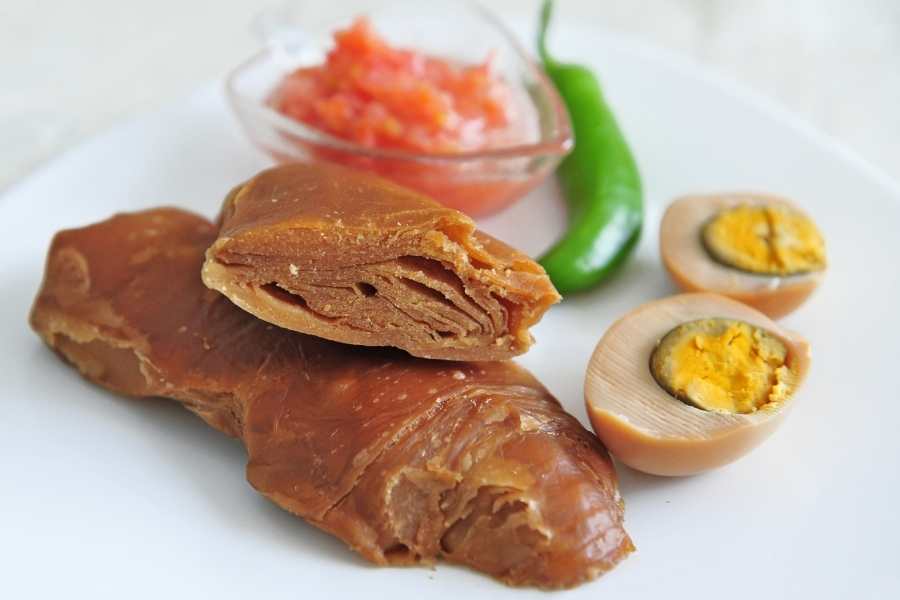
Jachnun is a Yemenite Jewish pastry that is usually eaten on the morning of the Shabbat (the Jewish day of rest). It is generally prepared using dough that is rolled and baked overnight. The final result is a dark paste, somewhat sugary in taste. It is often served with tomato salsa, boiled eggs and hot sauces.
Malawach
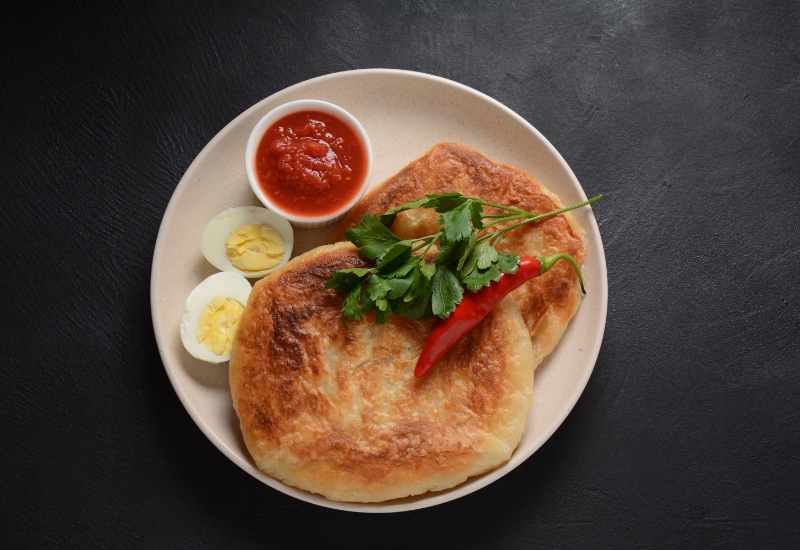
Malawach is a pancake that is common in Yemenite Jewish cookery. It is a toasted cake, which can be eaten sweet with honey, or savory with hard-boiled egg, tomato honey and yolk (spicy). It can also be served as a wrapper to house many ingredients such as boiled eggs, hummus, fried onions, eggplant, pickles and much more.
Knafeh
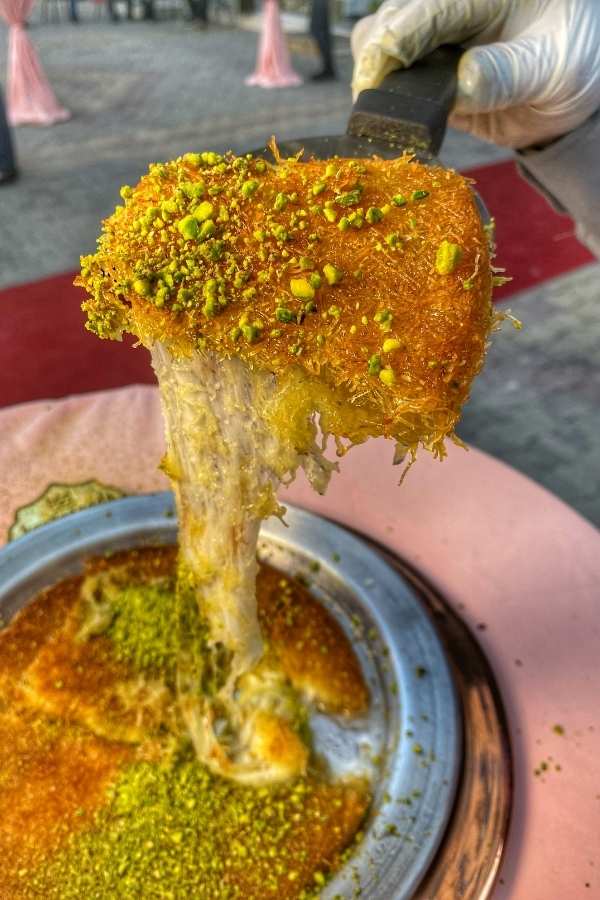
Knafeh (Künefe) is a Levantine dessert made with cheese and kadayif. Knafeh is very popular all over the eastern Mediterranean including in Greece, Turkey, Palestine, Syria and Lebanon. Ideally, it is eaten warm right after it comes out of the oven and tastes much better when eaten with yogurt ice cream.
Malabi
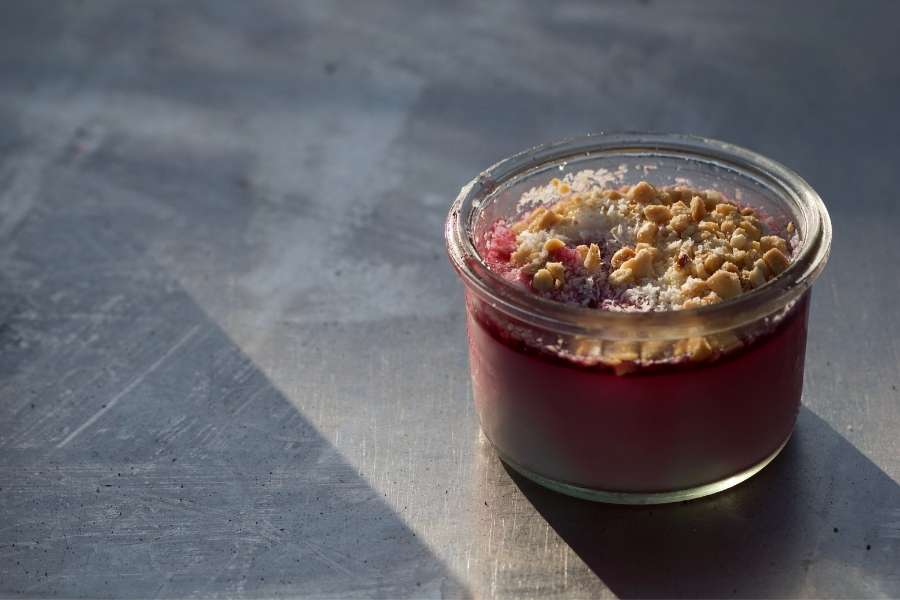
Malabi is a typical Israeli dessert made from rice flour or cornstarch and milk. It is a light milk pudding which is a variant of the Italian dessert panna cotta. The milk is flavored with rose water or orange blossom water and at the end, the malabi is sprinkled with sweet syrups such as maple syrup, and chopped nuts such as pistachios or walnuts.
Rugelach
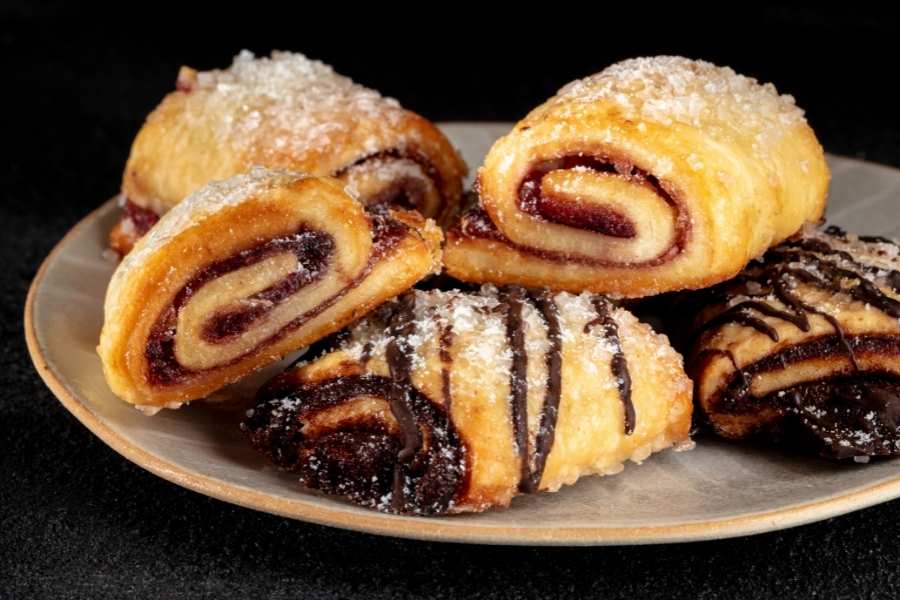
Rugelach is a simple Jewish croissant-like pastry made from dough with cream and filled with chocolate ganache, nuts, raisins or jam. It is perfect with coffee or as a small snack in between meals.
Burekas
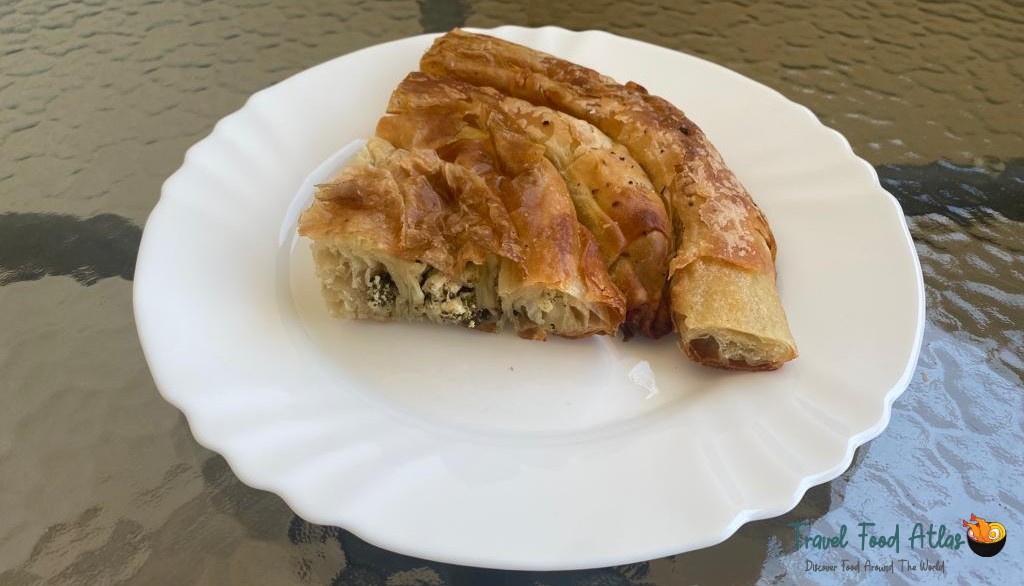
Burekas covers a range of pastry dishes made by layering thin phyllo dough, with fillings such as cheese, minced meat, spinach and seasonings, along with a creamy egg yogurt mixture which is baked into a crispy and flaky pie-like dish.
Lahoh
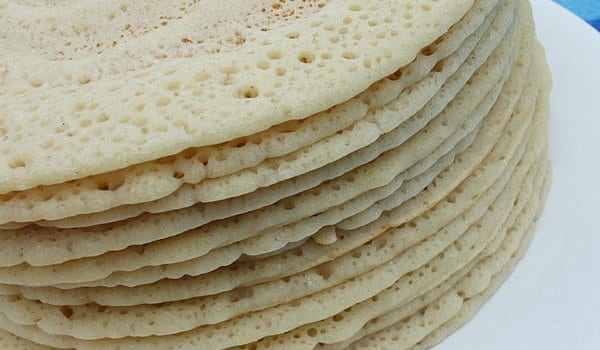
Lahoh (also known as canjeero, anjero or laxox) is a type of bread, similar in appearance to a pancake, a cousin of Ethiopian Injera which is eaten as the basis for many meals.
It is commonly served drizzled with butter or ghee, and sugar. It is also often eaten for lunch or dinner, usually accompanied by a curry, stew (maraq) or soup.
Israeli breakfast
Typically presented in a buffet format, an Israeli breakfast spread encompasses a variety of fruits, vegetables, salads, breads, pastries, dairy products, eggs, and fish, deliberately excluding meat.It initially emerged on Israeli collective farms known as kibbutzim, and has since become a customary offering at hotels and restaurants throughout Israel.
Tahini
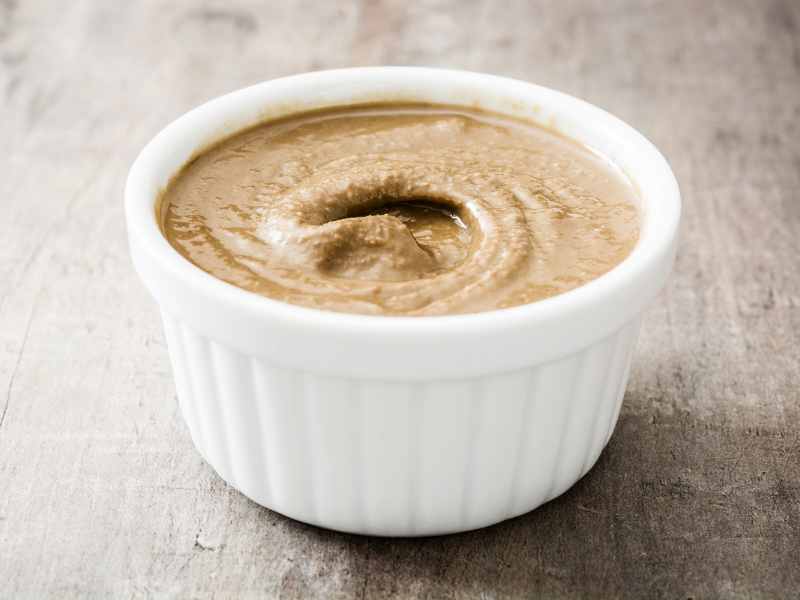
Tahini is a paste made from ground sesame seeds which is a staple ingredient in Israeli cuisine and is widely used in various dishes throughout the Middle East. In Israel, tahini is often used as a condiment, sauce, or dressing. It is known for its nutty flavor and creamy texture, and it’s commonly used in dishes such as hummus, falafel, baba ganoush, and various salads.
Tahini can also be mixed with lemon juice, garlic, and water to create a versatile sauce called tahini sauce, which is served with grilled meats, vegetables, or drizzled over falafel sandwiches. Overall, tahini plays a significant role in adding richness and depth of flavor to many Israeli dishes.
Tulumba/Pomba/Bamiyeh/Balaḥ ash-Shām
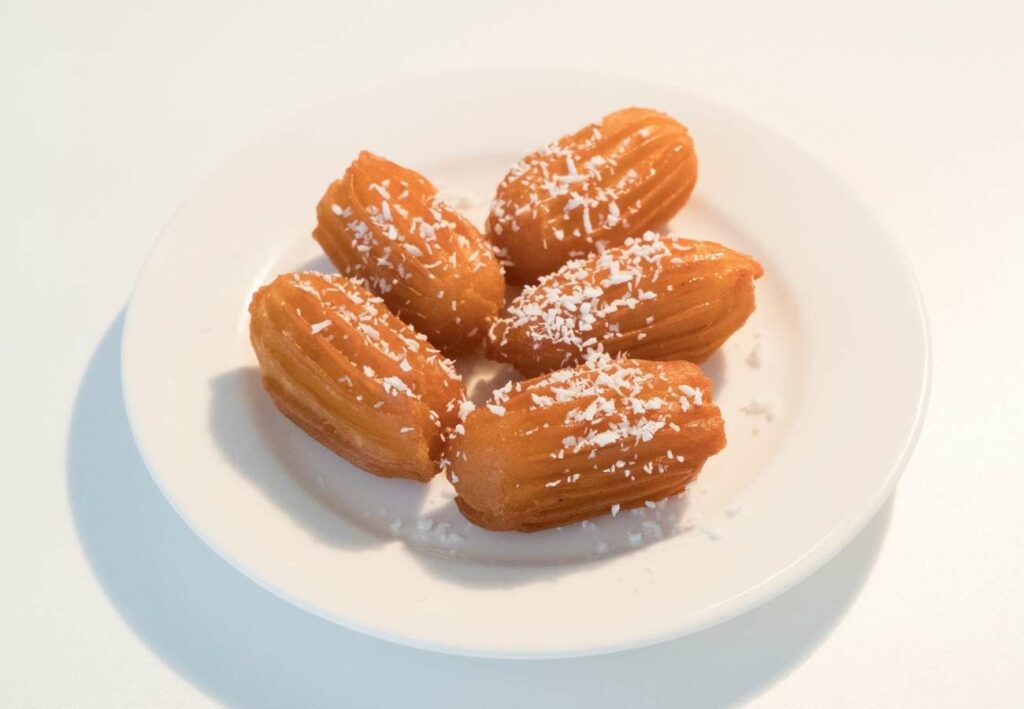
Tulumba, also known as Pomba, Bamiyeh or Balaḥ ash-Shām, is a deep-fried dessert. It is prepared using an unleavened dough lump, which is shaped as a small ovoid and includes ridges lengthways. It is shaped with the help of a pastry bag or cookie press, which has a fitting end part.
Tulumba is initially deep-fried to give this dessert a golden colour, and then sugar-sweet syrup is added on top while it’s still hot.
Israeli salad
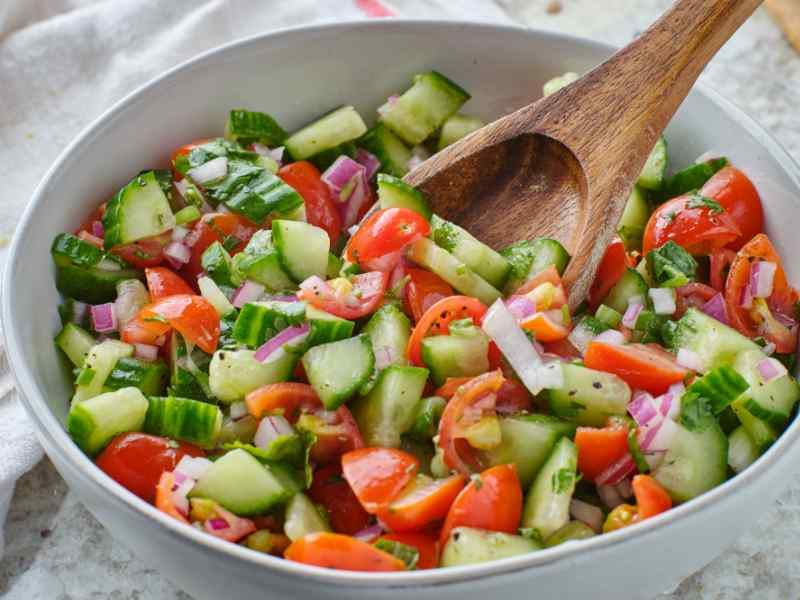
Israeli salad, also known as ‘Arabic salad’ or ‘Jerusalem salad’, is a popular side dish in Israeli cuisine made with diced fresh vegetables, typically including tomatoes, cucumbers, bell peppers, and onions. Sometimes, additional ingredients such as parsley, radishes, or lettuce may also be included. The vegetables are usually chopped into small, uniform pieces and then mixed together in a bowl.
Israeli salad is often dressed with a light and tangy dressing made from olive oil, lemon juice or vinegar, salt, and pepper. Some variations may also include other seasonings such as sumac or za’atar for extra flavor.
Israeli salad is enjoyed year-round and is commonly served as a side dish alongside grilled meats, falafel, or as part of a mezze platter. It’s known for its vibrant colors, crisp texture, and refreshing taste.
Sujuk (Sucuk) Sausage
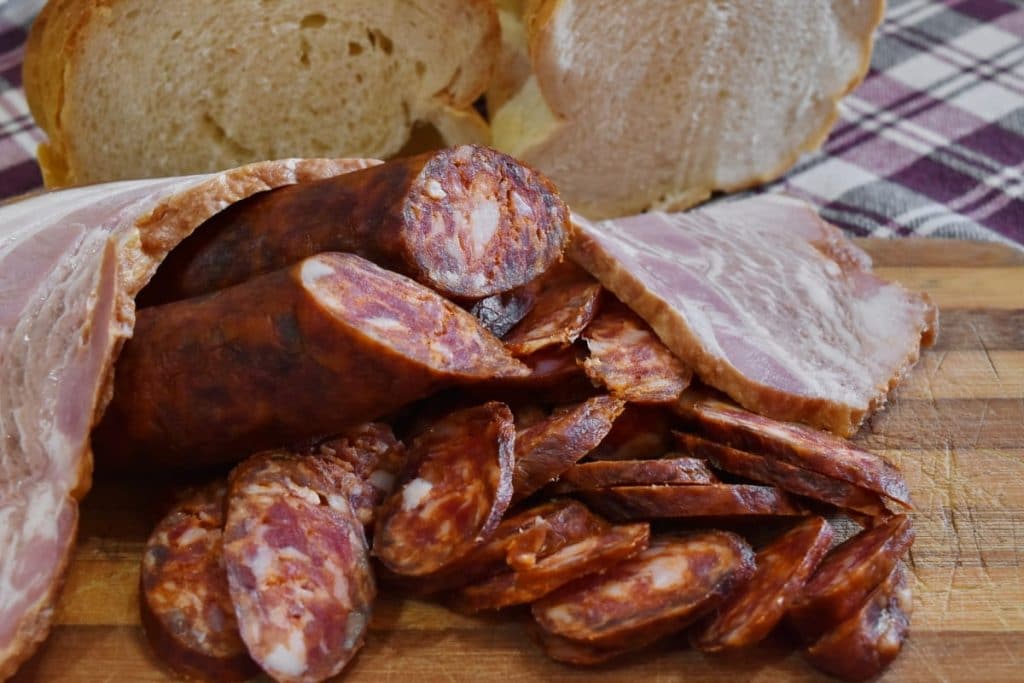
Sujuk is a dry, spiced sausage consumed in countries throughout the Middle East. Whilst most commonly associated with Lebanon and Turkey, it is revered in Israel too.
It is typically made of either beef, lamb or horse meat and is commonly eaten for breakfast where it is cut into slices, much like salami, and eaten with fried eggs.
Pita Bread
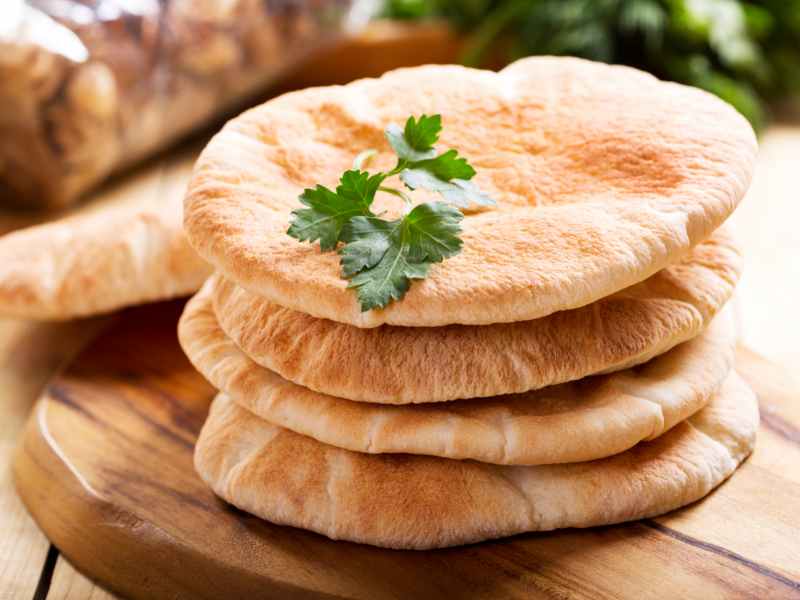
Pita bread is a staple in Israeli cuisine and in many Middle Eastern cuisines. It is a round, hollow bread that puffs up when baked, creating a pocket in the middle. This pocket makes pita bread ideal for filling with various ingredients, such as falafel, shawarma, or Israeli salad, to create sandwiches or wraps.
Pita bread is commonly served alongside dishes like hummus, baba ganoush and tahini as part of a mezze spread. It can also be used as a base for pizza-like dishes, where toppings are added to the flat surface of the bread before baking.
Freshly baked pita bread is preferred for its soft texture and slightly chewy consistency. It can be found in bakeries, markets, and supermarkets throughout Israel and is enjoyed both as a standalone bread and as an accompaniment to a wide range of dishes.
Couscous
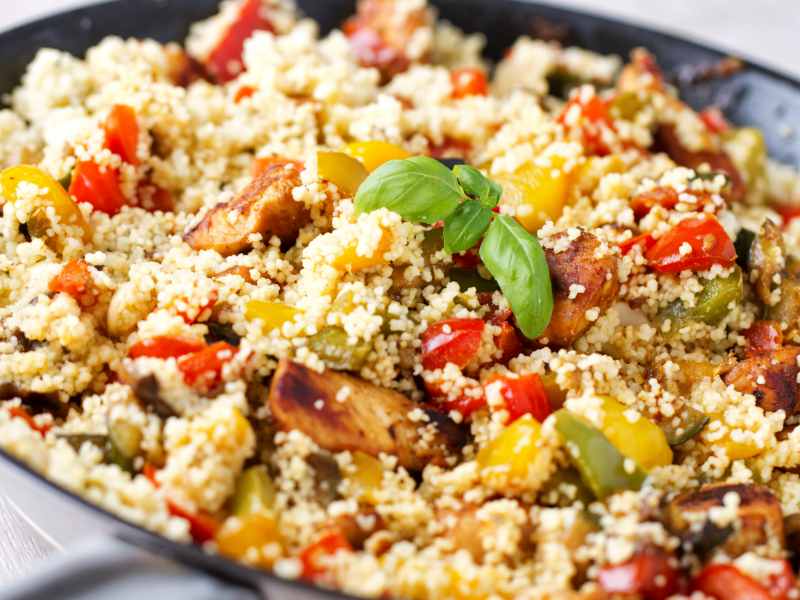
Couscous is a type of small, granular pasta made from crushed durum wheat semolina. While couscous itself is not originally Israeli, it is widely used in Israeli cuisine, particularly as a side dish or base for various recipes.
It is typically by either boiling it in water or broth until tender or by steaming it. It can then be seasoned and served plain as a side dish or mixed with various ingredients such as vegetables, herbs, spices, dried fruits, nuts, and proteins like chicken or fish to create flavorful salads, pilafs, or main dishes.
Challah bread
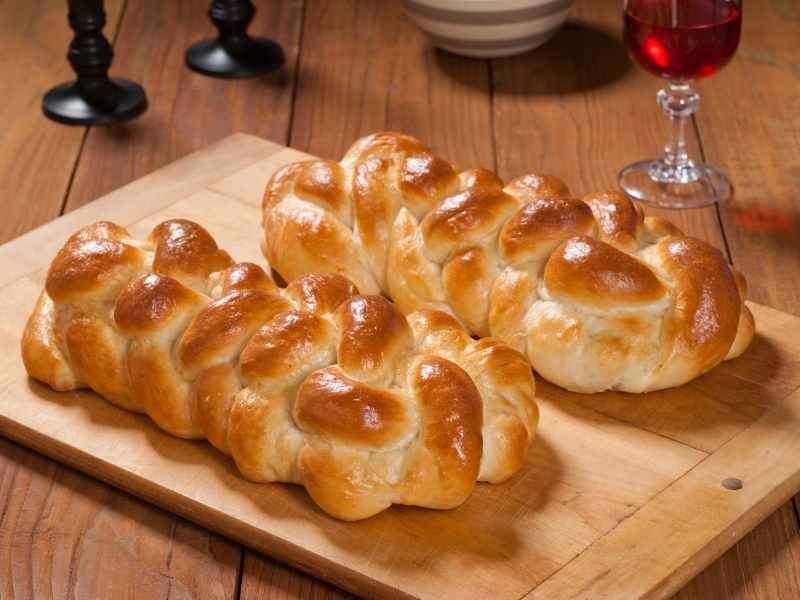
Challah bread is a traditional Jewish bread that is commonly associated with Israeli cuisine. It is a rich, egg-based bread that is slightly sweet and has a soft, fluffy texture. Challah is typically braided before baking, which gives it its distinctive appearance.
It is often enjoyed as a special bread for Shabbat (the Jewish Sabbath) and other holidays such as Rosh Hashanah (the Jewish New Year) and Yom Kippur (the Day of Atonement). It is also served on festive occasions like weddings and bar/bat mitzvah celebrations.
Challah plays a significant cultural and religious role in Jewish communities, symbolizing unity, tradition, and the importance of communal meals. It is often eaten with honey or dipped in salt before being shared among family and friends.
Hamantaschen
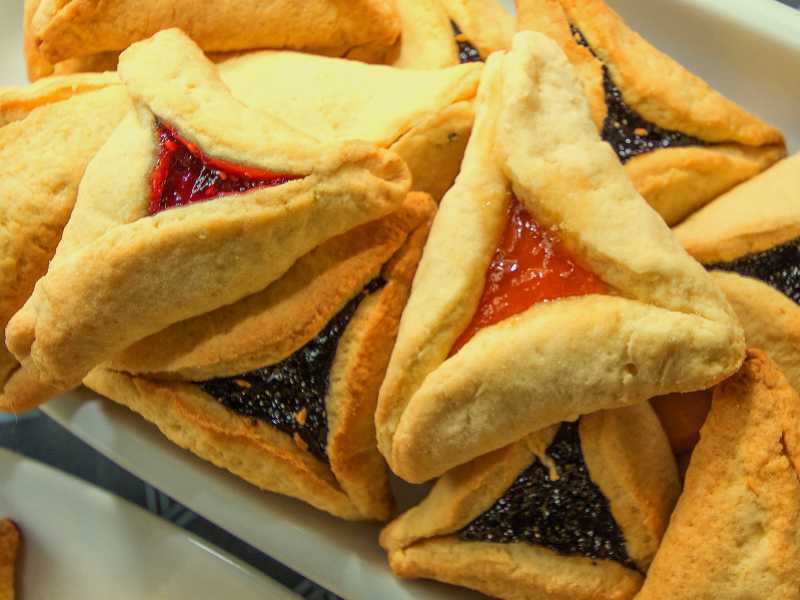
Hamantaschen are a traditional Jewish, triangular shaped pastry consisting of a sweetened dough with a filling. They can have a wide range of fillings, usually sweet, including jams like apricot, strawberry or raspberry, mashed fruit like cherries or apples, spreads like chocolate or nut based.
The traditional fillings are mohn and lekvar. Mohn is a pasty poppy seed filling. Lekvar is a pureed dried fruit filling, usually made with prunes.


